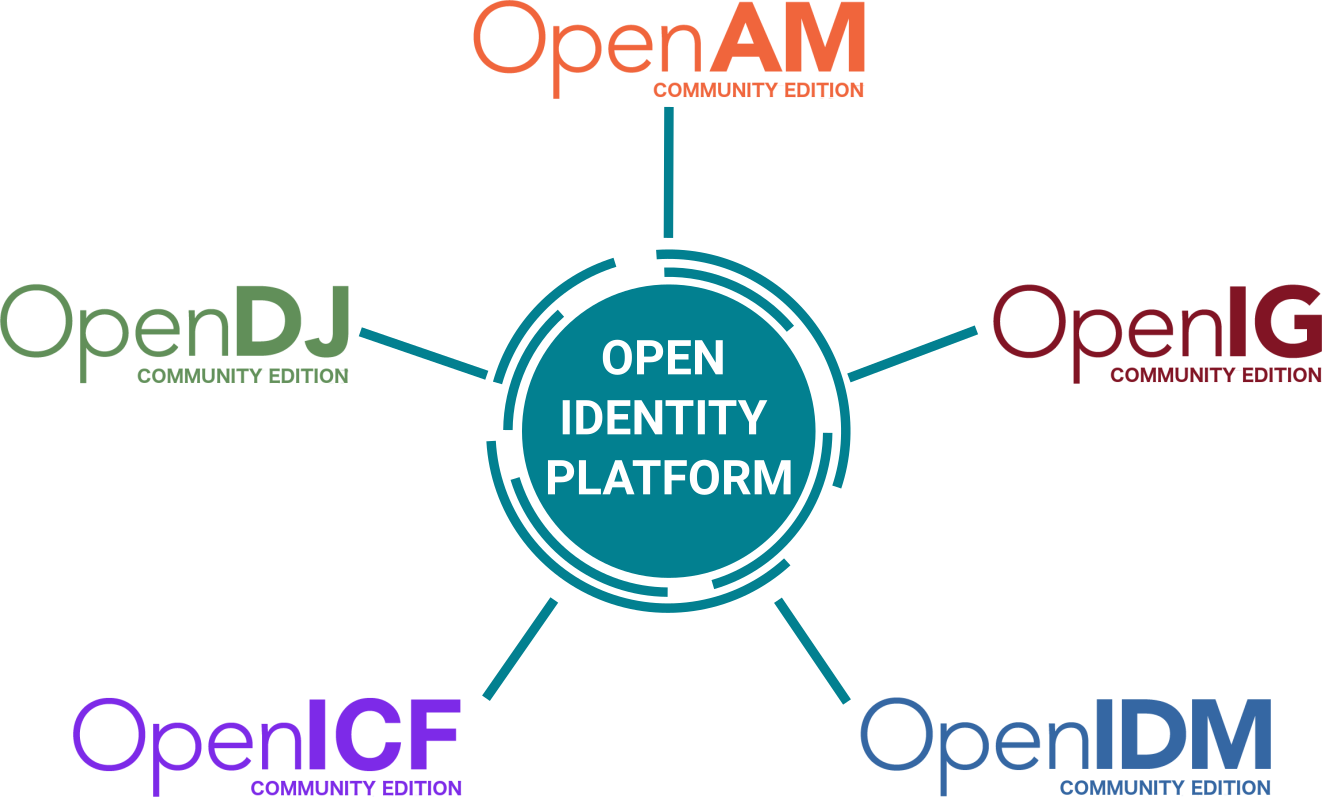-
-
Notifications
You must be signed in to change notification settings - Fork 11
How to Protect WebSocket Connection with OpenAM and OpenIG
- Introduction
- Sample Websocket Service Introduction
- OpenIG Configuration
- OpenAM Configuration
- Test Solution
This article is a continuation of the article How to Add Authorization and Protect Your Application With OpenAM and OpenIG Stack . The previous article described how to protect regular HTTP endpoints. In the following we will proctect WebSocket connection with OpenAM authentication. To simplyfy setup and deployment of services we will use Docker and Docker Compose tools.
To test WebSocket we will use a Sping Framework based Sample Socket Service. To tun the serive in Docker, create docker-compose.yml file and add sample-service:
docker-compose.yml:
version: '3'
services:
sample-service:
image: maximthomas/sample-service
restart: always
ports:
- "8082:8080"
networks:
openam_network:
aliases:
- sample-service
networks:
openam_network:
driver: bridgeRun docker compose up command and after the service is started, open your browser and navigate to http://localhost:8082/ui/ws. You will see a web page from which you can connect to the WebSocker, send messages and see the replies from the server. Establish connection by pressing the Connect button and send message by pressing the Send Message button. After a message is received by the server it responds by current server tome.

Let's setup access to the sample service instance via OpenIG. Remove ports section from the docker-compose.yml file and add OpenIG.
Create folder openig-config go to the folder and create two files admin.json and config.json with the followin contents:
admin.json
{
"prefix" : "openig",
"mode": "PRODUCTION"
}confin.json
{
"heap": [],
"handler": {
"type": "Chain",
"config": {
"filters": [],
"handler": {
"type": "Router",
"name": "_router",
"capture": "all"
}
}
}
}Then add OpenIG routes for sample-service UI and WebSocket endpoints. Create routes folder in openig-config folder.
In routes folder create 10-ui.json for UI and 10-websocket.json as well.
10-ui.json
{
"name": "${matches(request.uri.path, '^/ui/*')}",
"condition": "${matches(request.uri.path, '^/ui/*')}",
"monitor": true,
"timer": true,
"handler": {
"type": "Chain",
"config": {
"filters": [],
"handler": "EndpointHandler"
}
},
"heap": [
{
"name": "EndpointHandler",
"type": "DispatchHandler",
"config": {
"bindings": [
{
"handler": "ClientHandler",
"capture": "all",
"baseURI": "${system['secured']}"
}
]
}
}
]
}10-websocket.json
{
"name": "${matches(request.uri.path, '^/ws-handler')}",
"condition": "${matches(request.uri.path, '^/ws-handler')}",
"monitor": true,
"timer": true,
"handler": {
"type": "Chain",
"config": {
"filters": [
{
"type": "HeaderFilter",
"config": {
"messageType": "REQUEST",
"add": {
"Host": [
"${matchingGroups(system['ws.secured'],\"(http|https):\/\/(.[^\/]*)\")[2]}"
]
},
"remove": [
"Sec-Websocket-Key",
"Sec-Websocket-Version",
"Host",
"Origin"
]
}
}
],
"handler": "EndpointHandler"
}
},
"heap": [
{
"name": "EndpointHandler",
"type": "DispatchHandler",
"config": {
"bindings": [
{
"handler": "ClientHandler",
"capture": "all",
"baseURI": "${system['ws.secured']}"
}
]
}
}
]
}We need to remove headers fromt the client original HTTP request to establish a proper WebSocket connection from OpenIG instance to secured-service.
Add OpenIG service to the docker-compose.yml file.
...
openig:
image: openidentityplatform/openig
build: .
volumes:
- ./openig-config:/usr/local/openig-config/config:ro
ports:
- "8081:8080"
environment:
CATALINA_OPTS: -Dopenig.base=/usr/local/openig-config -Dsecured=http://sample-service:8080 -Dopenam=http://openam.example.org:8080/openam -Dws.secured=ws://sample-service:8080 -org.openidentityplatform.openig.websocket.ttl=180
networks:
openam_network:
aliases:
- openig.example.org
...System properties from OpenIG example configuration
| Peroperty | Description |
|---|---|
| secured | points to the HTTP service |
| ws.secured | Points to the WebSocket service |
| openam | points to OpenAM instance (we will use this setting in future) |
| org.openidentityplatform.openig.websocket.ttl | The interval in seconds, during which the validity of the session is checked (default 180) |
Run the docker compose with the followin file. After OpenIG and sample servie are up, open http://localhost:8080/ui/ws URL in your browser. You'll be able to establish WebSocket connection and all interactions will be proxied by OpenIG.
Let's add OpenAM authentication to our stack.
Add OpenAM service to the docker-compose.yml file.
...
openam:
image: openidentityplatform/openam
volumes:
- ./data/openam:/usr/openam/config
ports:
- "8080:8080"
networks:
openam_network:
aliases:
- openam.example.org
...The ./data/openam folder is needed to store OpenAM persistent configuration.
Add FQDN openam.example.org and openig.example.org to hosts file:
127.0.0.1 openam.example.org openig.example.org
Run docker-compose file, setup OpenAM, add cookie domain and setup jwt endpoint as described in How to Add Authorization and Protect Your Application With OpenAM and OpenIG Stack
article.
Add OpenAM token validation filters to the 10-websocket.json file.
{
"type": "ConditionalFilter",
"config": {
"condition": "${empty contexts.sts.issuedToken and not empty request.cookies['iPlanetDirectoryPro'][0].value}",
"delegate": {
"type": "TokenTransformationFilter",
"config": {
"openamUri": "${system['openam']}",
"realm": "/",
"instance": "jwt",
"from": "OPENAM",
"to": "OPENIDCONNECT",
"idToken": "${request.cookies['iPlanetDirectoryPro'][0].value}"
}
}
}
},
{
"type": "ConditionalFilter",
"config": {
"condition": "${not empty contexts.sts.issuedToken}",
"delegate": {
"type": "HeaderFilter",
"config": {
"messageType": "REQUEST",
"remove": [
"Authorization",
"JWT"
],
"add": {
"Authorization": [
"Bearer ${contexts.sts.issuedToken}"
]
}
}
}
}
},
{
"type": "ConditionEnforcementFilter",
"config": {
"condition": "${not empty contexts.sts.issuedToken}",
"failureHandler": {
"type": "StaticResponseHandler",
"config": {
"status": 401,
"reason": "Found",
"headers": {
"Content-Type": [
"application/json"
],
},
"entity": "{ \"Error\": \"Unauthorized\"}"
}
}
}
}These three filters do the following:
The first filter converts OpenAM token to JWT and sets to the request contest. The second filter adds JWT to the OpenIG to target service request. The third filter checks if there is a JWT in the request context and if not, responds with the 401 error. If authentication
Navigate to http://openig.example.org:8081/ui/ws and press the Connect button. You will see the connection error message.
Log:
connecting...
socket error occurred
socket connection closed
Open the next tab in your browser and navigate to OpenAM URL http://openam.example.org:8080/openam
Login to OpenAM, return to http://openig.example.org:8081/ui/ws tab and try to connect again.
You will see the following
connecting...
connected
Press the Send Message button and you should see the following messages
sending message...</br>
got response message from server: current time: Mon Mar 13 12:57:45 UTC 2023
Let's logout from OpenAM go back to http://openig.example.org:8081/ui/ws wait 3 minutes (as set in the org.openidentityplatform.openig.websocket.ttl setting) and try to send a message.
We will see the following:
sending message...
socket connection closed








